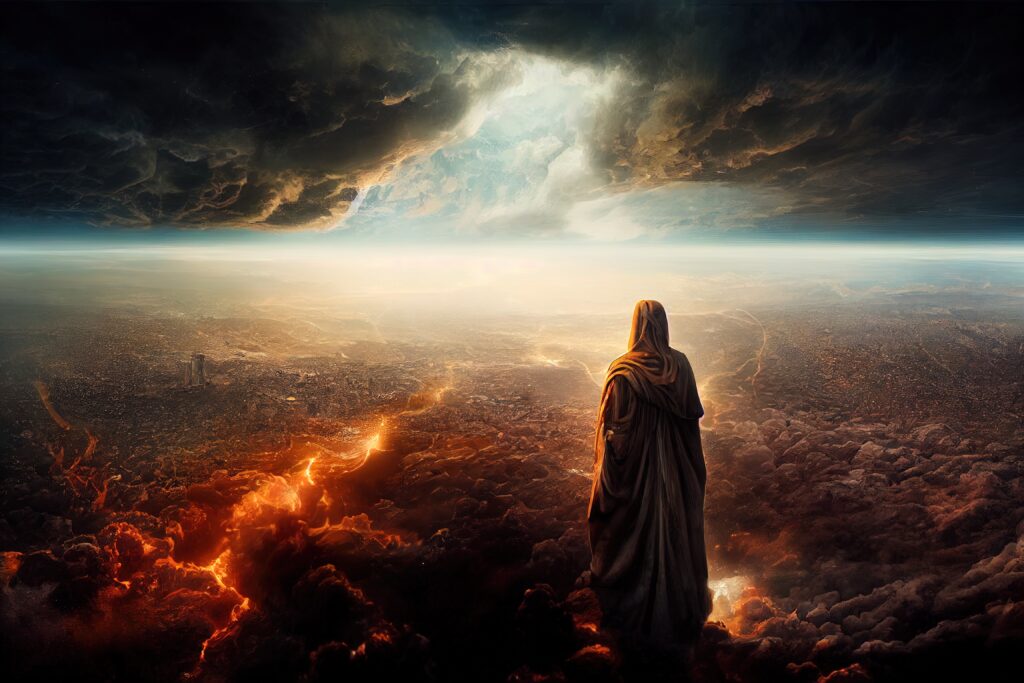
The seal of God and the Mark of the Beast are Opposites.
And I saw another angel ascending from the rising of the sun, holding the seal of the living God; and he called out with a loud voice to the four angels to whom it was granted to harm the earth and the sea, saying, “Do not harm the earth, or the sea, or the trees until we have sealed the bond-servants of our God on their foreheads.” – Revelation 7:2-3 NASB
The words for sealing in the New Testament are multiple in meaning. First of all, you can seal a document to protect it from tampering. You can do the same with a tomb or a prison cell. When you seal a document or a place, you are concealing something or someone: examples in the Bible include the tomb of Jesus (Matthew 27:66); the heavenly scroll (Rev5); and Satan’s confinement in the Abyss (Rev20:3).
Secondly, sealing can certify that something or someone is reliable: certified letters have a seal indicating that the information inside is reliable or has been delivered without tampering (cf. John 3:33; 6:27; Rom 15:28; 1 Cor 9:2).
Thirdly, sealing can be used to indicate that a person has been accepted by God. God knows who belongs to Him and He gives them the Holy Spirit (2 Tim 2:19; 2 Cor 1:22; Eph 1:13; 4:30). Sealing, therefore, became associated with circumcision (Rom 4:11) and baptism. In these verses we are “sealed” by the Holy Spirit when we believe.
The sealing of Revelation 7 occurs just before the close of probation, the time when everyone’s fate is sealed and their decisions are final.
From John’s point of view, sealing has to do with how people relate to God at the end. In the broader sense, sealing is the indication that people are acceptable to God. “The Lord knows those who are His” (2Tim 2:19). So, the New Testament concept of sealing is not limited to the end-time. But in Revelation 7 sealing occurs in an end-time setting. The final proclamation of the gospel results in polarised decisions and a great final sealing work. Those who are not sealed receive the mark of the beast.
This kind of study doesn’t make for light reading. Sometimes Christians need to do heavy, detailed investigations of Scripture in order to understand the ways of God. We live in an age where relevance is prized more than learning and many people have no patience with Bible study that doesn’t have an obvious and immediate payoff. The long-term reward for detailed study is an understanding of the big picture that transforms everything you read in the Bible.
The setting of Rev. 7 is the last verse of chapter 6. “For the great day of His wrath has come, and who is able to stand?” The purpose of Rev. 7 is to provide the answer to this question. The answer comes in two parts: The 144,000 (7:1-8) and a great multitude (7:9-17).
There is a chilling background to this passage. The scene is Jerusalem; 586BC. In vision, Ezekiel watches as six terrifying men approach the temple from the north with deadly weapons in their hands. A seventh man is with them, and he has a writing kit at his side. The seven men enter the temple courts and stand by the altar of burnt offering.
Then a stunning thing happens. As the vision unfolds the Shekinah glory of God rises from the ark and moves out to the door of the temple, visible to all! God Himself calls out to the man with the writing kit and says, “Go throughout the city of Jerusalem and put a mark on the foreheads of those who grieve and lament over all the detestable things that are done in it.” Then He orders the other six to follow him and slaughter old and young, male and female, without showing pity or compassion. “But do not touch anyone who has the mark. Begin at my sanctuary.” And the men begin the slaughter among the elders standing in front of the temple (Ezek9:1-7).
This scene is one of the most frightening, most sobering texts in the entire Bible. It is a symbolic description of events that took place almost literally in the destruction of Jerusalem in Ezekiel’s day. God drew a distinction between those who were on His side (sighing and crying for the abominations of the people) and those who would be slain.
Revelation 7 offers a glimpse of the final events of earth’s history: a final proclamation, marks on the forehead, the world called into judgment, and God rescuing His people. In the end, God’s discerning eye can tell who is committed to Him and who is not. God’s people have often suffered at the hands of others in the name of God. In the end, God will make clear to all exactly who belongs to Him.

My prayer is that i will have the seal of God and be able stand in the last day before our Lord
Having the seal Robyn, is accepting Jesus into your life – which you have done. When we accept Jesus we are Sealed with the promised Holy Spirit.